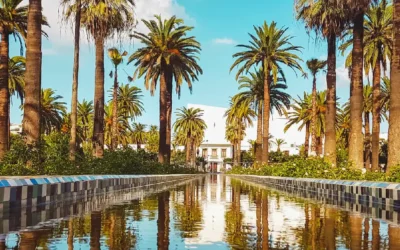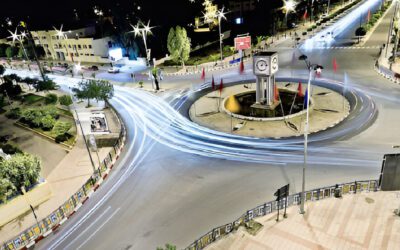Tangier City: The Bridge of Morocco Between Europe And Africa
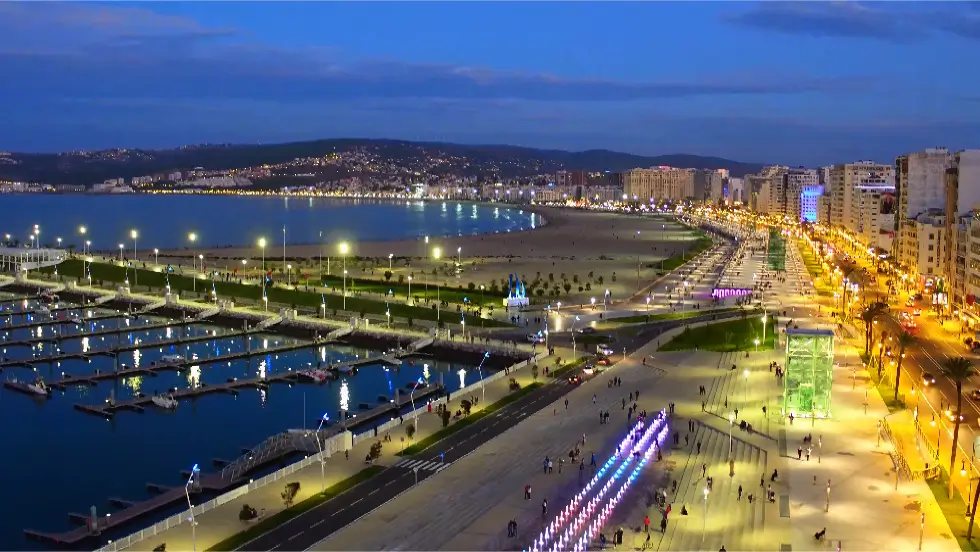
Table of Contents:
Introduction to Tangier City
Tangier City, situated in the Tangier–Tetouan–Al Hoceima region of Morocco in the north, holds a unique geographical position on the Strait of Gibraltar, just 17 miles from Spain, serving as a significant bridge between Europe and Africa.
This location has shaped Tangier into a melting pot of cultures and a historical playground where various empires, including Roman, Byzantine, and Arab, left their marks. In the mid-20th century,
Tangier became a haven for artists, writers, and political thinkers from around the globe, notably hosting Moroccan writer Mohamed Choukri.
The city’s rich past is mirrored in its vibrant streets, adorned with a mix of architectural styles, bustling medinas, elegant palaces, and charming cafes, making Tangier a lively blend where tradition meets modernity.
Tangier’s Cultural Fusion
Tangier, a city on Morocco’s northern coast, is a cultural mosaic with Berber, Arab, European, and Andalusian influences. Its diverse architecture mirrors this fusion, with the UNESCO-recognized Medina as a highlight.
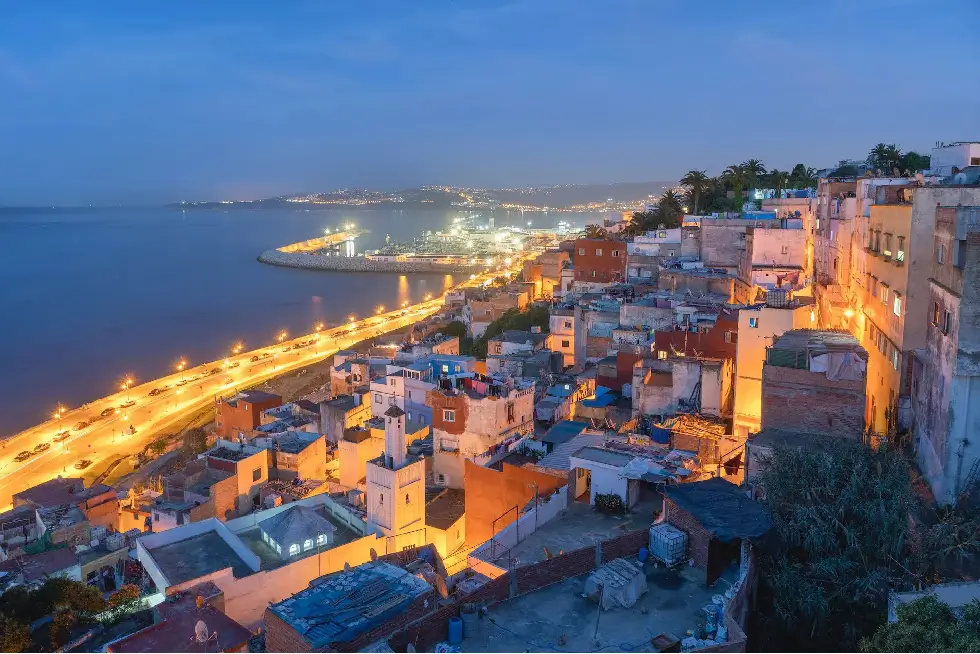
In the mid-20th century, Tangier attracted artists and intellectuals, enhancing its bohemian culture, and since 1962, it’s been a summer retreat for the Moroccan royal family. The city hosts various cultural festivals like the Tangier International Film Festival and TanJAZZ, celebrating its artistic heritage.
Religion, especially Islam, significantly influences Tangier’s daily life and festivals, but it also embraces Christian and Jewish heritage, showcasing a spirit of religious coexistence. Tangier’s enduring appeal lies in its blend of traditional and contemporary cultures, offering a unique cultural and historical experience.
Exploring Tangier: A Tourist’s Guide to City’s Attractions
The tourist attractions in Tangier provide a captivating glimpse into the city’s rich cultural heritage, blending historical landmarks with natural beauties. Here are some examples:
Major Places To Visit, Historical Landmarks, and Natural Beauties:
1. Café Haf
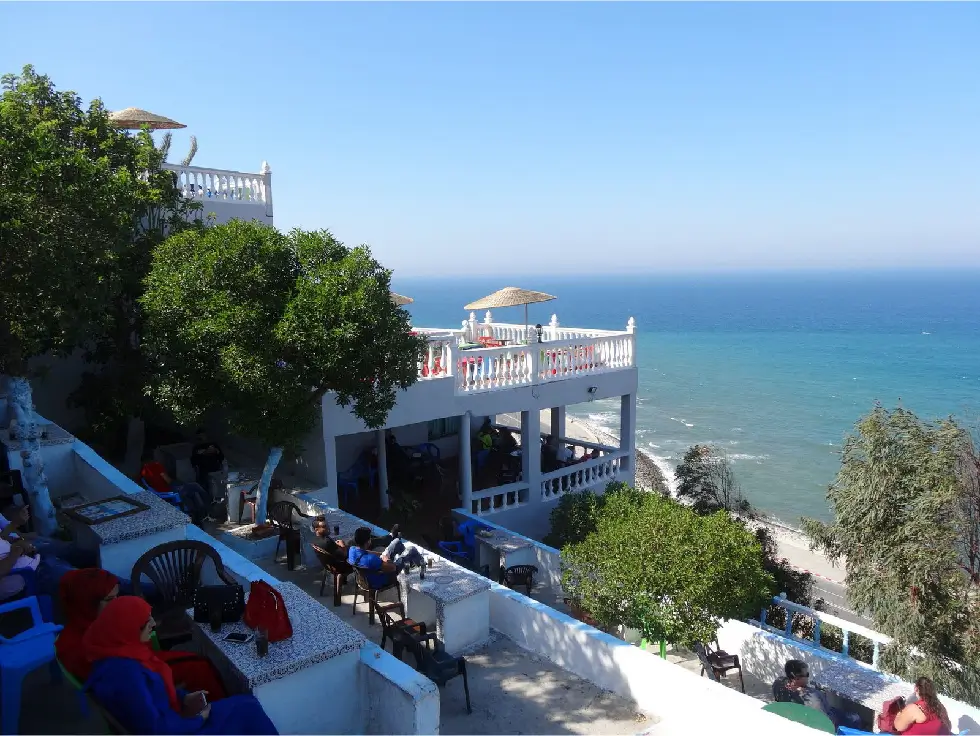
Since its inception in 1921, this cliffside café has been offering mesmerizing vistas of the Mediterranean Sea, embodying a chapter of Tangier’s storied past.
2. Tangier’s Medina
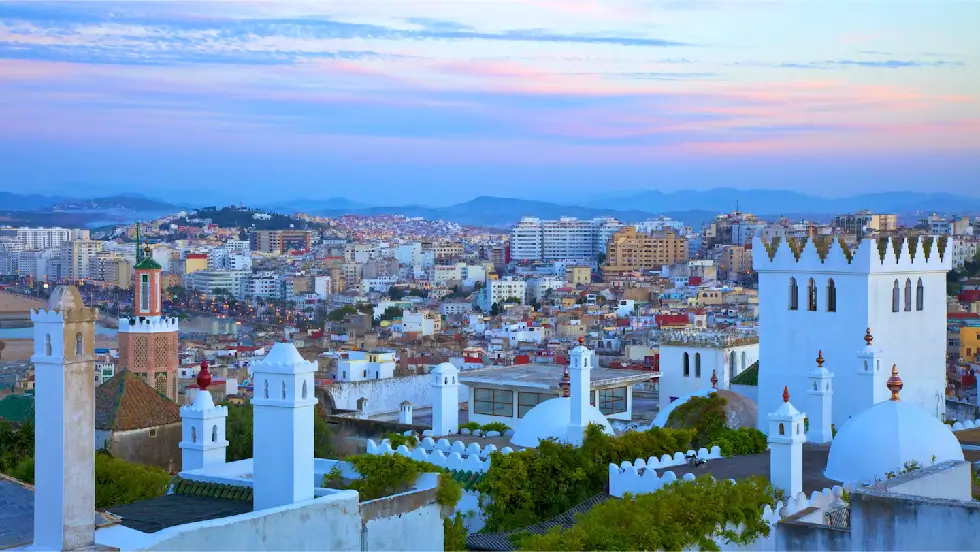
This ancient part of the city is a maze of vibrant, narrow lanes cascading down the cliff towards the ocean, offering a window into Tangier’s rich legacy.
3. Caves of Hercules
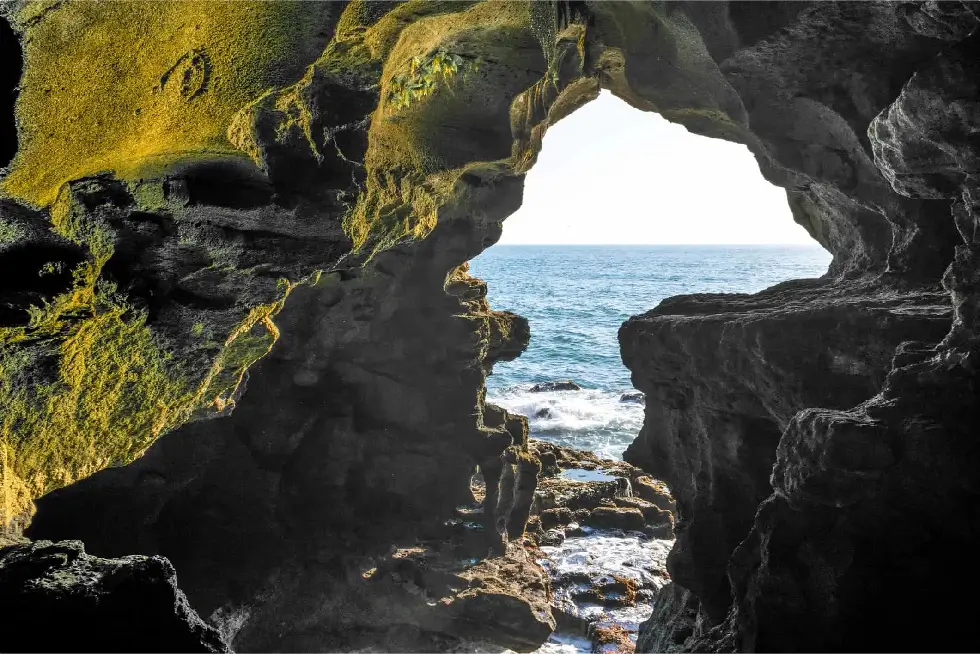
Located 7 miles to the west of Tangier, these caves, a blend of natural and man-made wonders, stretch over 18.6 miles and stand as a prime attraction in the vicinity.
4. The Kasbah
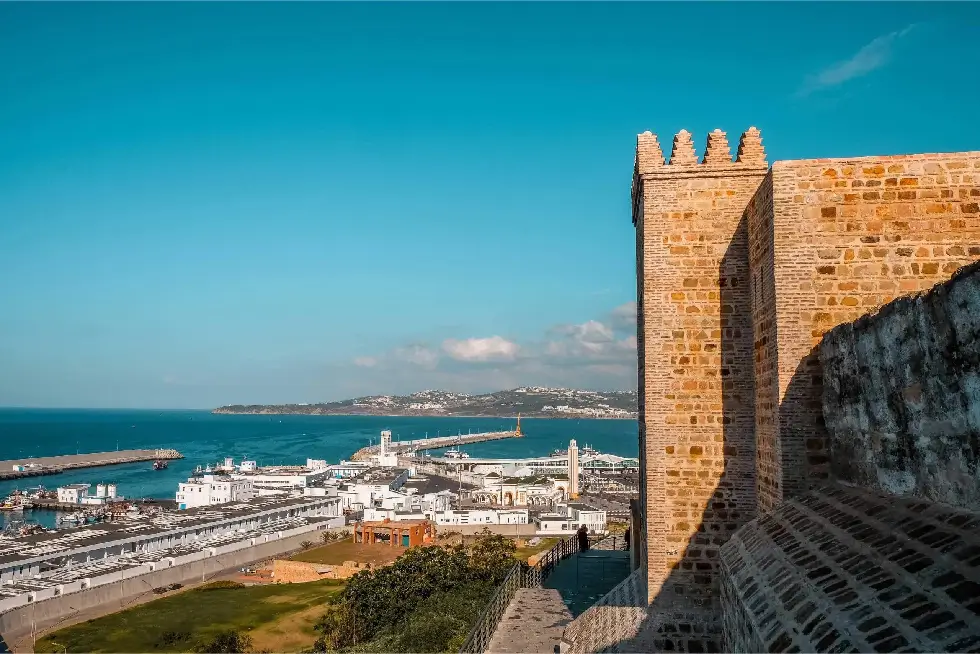
This old fortified segment of Tangier invites visitors to meander through its narrow stone-paved streets, explore traditional Moroccan bazaars, and relish breathtaking views of Tangier’s port.
Hospitality Sector:
1. Hotels
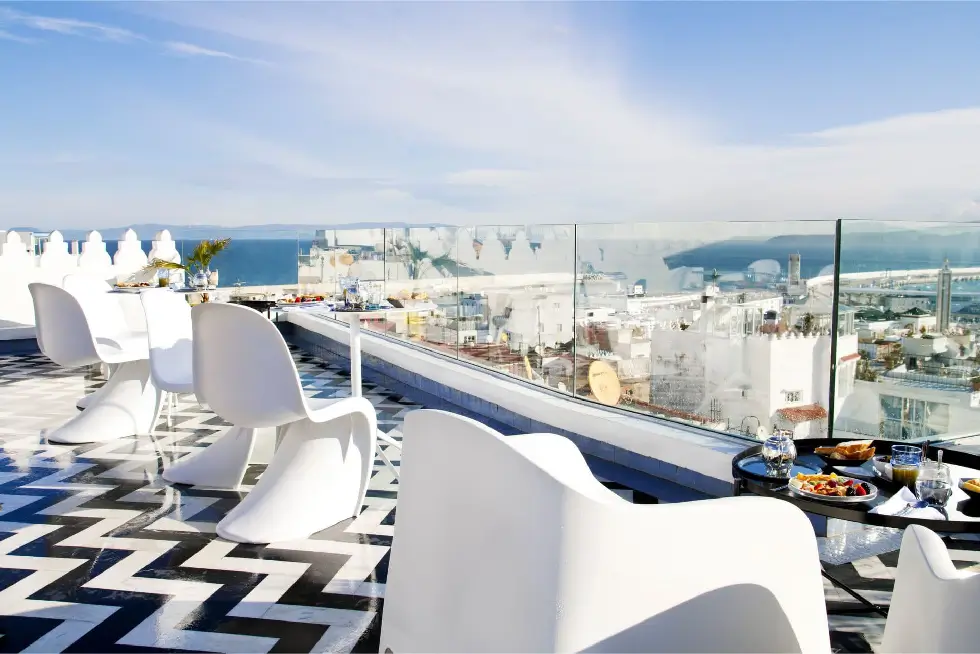
The hospitality landscape in Tangier is burgeoning, with high-end establishments like Hilton Tanger City Center Hotel & Residences anchoring the Tanger City Center, a vast multi-purpose development. Other sought-after luxury abodes include Saba’s House – Riad Dar Saba, and Hilton Tangier Al Houara Resort & Spa.
2. Restaurants
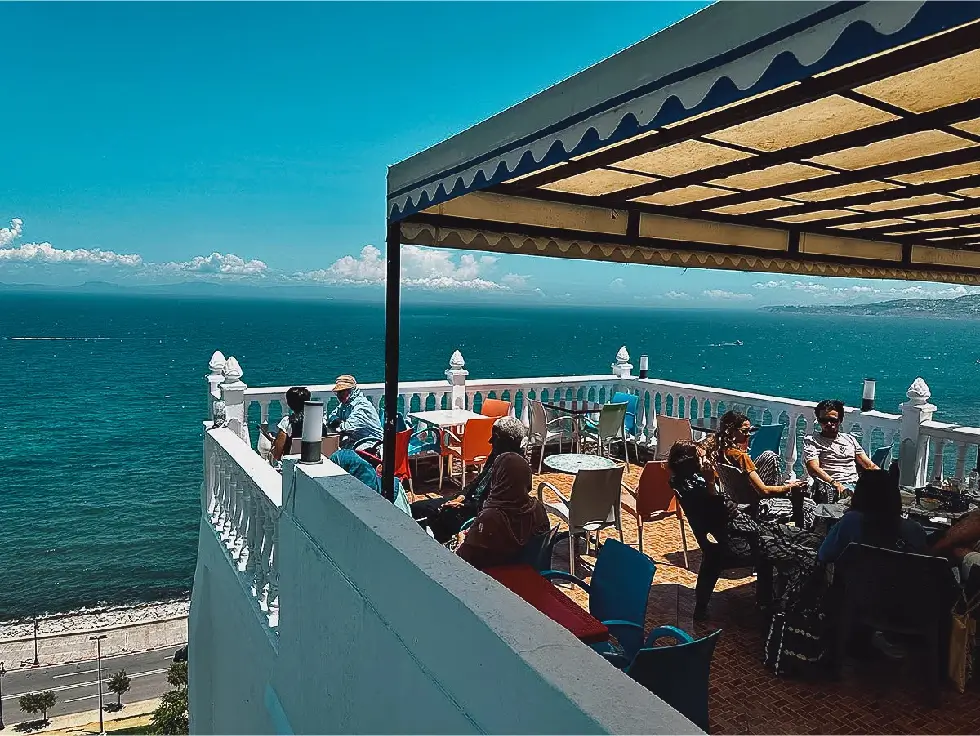
Tangier is home to a plethora of eateries, with Café Hafa warranting a special mention for its vintage ambiance and stunning overviews of Tangier Bay. Moreover, 478 other dining venues offer a myriad of culinary experiences catering to diverse palates.
Accessibility:
1. From Europe
Perched on a bay of the Strait of Gibraltar, merely 17 miles from Spain’s southern extremity, Tangier is highly accessible from Europe, particularly via ferry services from Tarifa and Algeciras in Spain, which ferries passengers to Tangier in around 30 and 70 minutes respectively.
2. Within Morocco
As a crucial port city and a favored gateway to Morocco courtesy of its nearness to Spain, Tangier is well-linked to other Moroccan locales. Its strategic position in northern Morocco also renders it a perfect retreat, melding the essences of French, African, Spanish, and Portuguese cultures.
The rich tapestry of cultural heritage, alongside a thriving hospitality sector and advantageous location, positions Tangier as a captivating destination for travelers, unveiling a distinctive amalgam of historical, natural, and contemporary allure.
Economic Overview Of Tangier
Tangier the International Zone, one of the largest economies among Moroccan cities like Casablanca etc…, stands as a crucial industrial cornerstone in the nation. It boasts a variety of economic sectors including industry of automobile, textiles, chemicals, metallurgical, and naval industries. The city is home to four industrial parks, with two of them recognized as free economic zones.
The journey of modernization in Tangier has seen significant strides, particularly post the late 1990s when King Mohammed VI identified the city as a key player in transforming the northern region into a powerhouse for national economic growth. Major infrastructure undertakings such as the Tangier-Mediterranean port (Tanger-Med) and its industrial parks, coupled with a burgeoning business district and rejuvenated tourist infrastructure, have played a substantial role in advancing the city’s economic modernization.
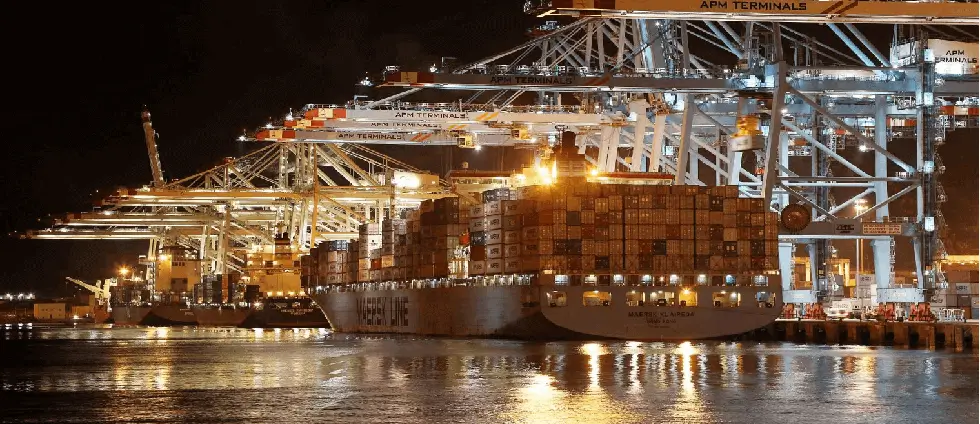
Tangier has been a magnet for hefty foreign investment, especially in the realm of seaside resorts and other tourist-oriented infrastructures. This investment, partially sourced from international firms like Hamptons International and Emaar, signifies a rising global interest in the economic prospects of Tangier. Furthermore, the stable political milieu and open economic policies of Morocco have been conducive to foreign investment, fostering a sturdy business landscape in Tangier, even in the face of a global pandemic, thus highlighting its resilient nature and pivotal position in the global trade pathways.
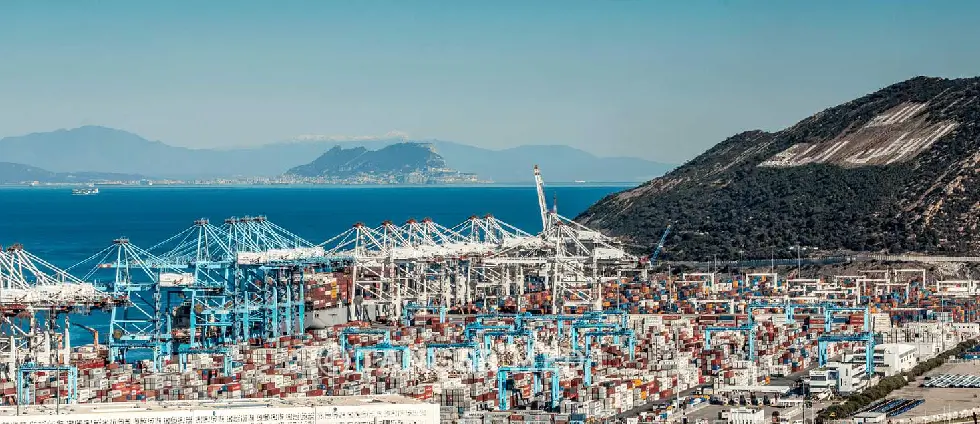
Looking ahead, Tangier’s growth trajectory holds promise, with the evolution of the Tanger Med Port, the rejuvenation of the old medina, and initiatives to enhance tourism forming the crux of its growth blueprint. The city’s ambition to broaden its economic horizons, luring a diverse range of businesses beyond just low-cost manufacturing, is palpable with the burgeoning interest from entities in logistics, technology, and service sectors, showcasing an expanding industrial arena.
On the international front, Tangier is carving out a distinct role, underscored by its strategic geographic placement and updated port facilities, which are indispensable for Morocco’s engagement in global commerce. The Tanger Med port, acclaimed as Africa’s largest seaport, stands as a testament to Tangier’s global stature, providing a vital conduit for Morocco’s economy, especially amid economic adversities like the recent pandemic. Additionally, the port serves as a formidable maritime logistics center, amplifying Tangier’s imprint on global trade circuits.
The interplay of growth, modernization, and global recognition renders Tangier a nexus of economic development and a distinguished actor on both the national and international stage. The sustained endeavors to diversify its economic fabric, together with significant foreign investment and a strategic geographic locale, accentuate Tangier’s potential for continued growth and its evolving position in the global economic arena.
A Glimpse Of The Modern City Of Tangier
Modern Tangier is a fascinating blend of historical allure and contemporary charm, making it a unique destination for visitors. Here’s a glimpse into the multifaceted city:
A Mix of Old and New:

Tangier has been around for over 2500 years, earning it the nickname the White City thanks to its bright white buildings. The architecture here is a mix of many cultures, with Middle Eastern temples and old-style cobblestone streets. Don’t miss the historic Kasbah and Medina where you can stroll through tight lanes, see stunning buildings, and shop in lively markets.
A Place for Culture Lovers:

Many famous artists and bands like Henri Matisse, The Beatles, and The Rolling Stones found inspiration in Tangier’s rich culture. Even today, the city buzzes with creativity, housing numerous museums, galleries, and artist studios.
The Modern Side:

Tangier has modern areas like Ville Nouvelle known for its upscale hotels and eateries, contrasting the old Medina. Other areas like Marshan and Malabata offer everything from peaceful spots with beautiful views to beachside chill.
Hollywood’s Picture-Perfect Spot:
Movies like “Inception” and “Spectre” were filmed in Tangier, adding a touch of movie magic for visitors.
Foodie Paradise:
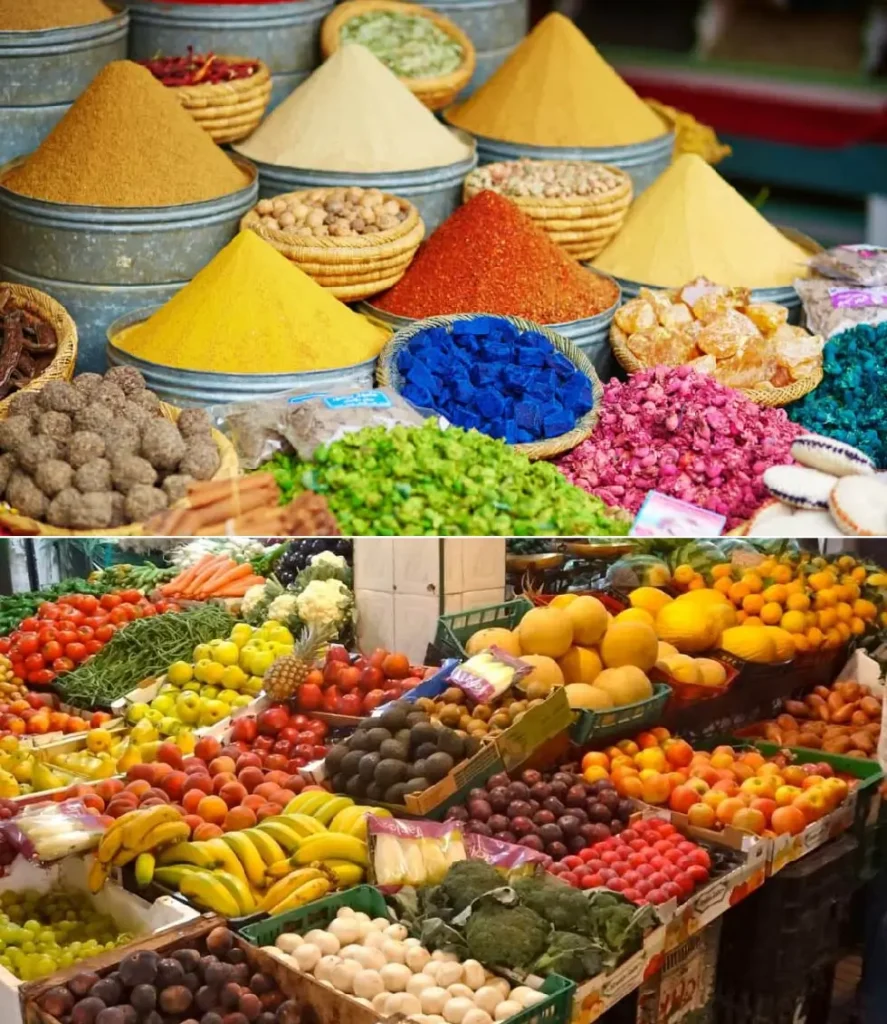
Tangier’s markets are a feast for the senses with fresh produce, seafood, and tons of spices. Enjoy a meal right from the market to the table and taste real Moroccan flavors.
Nearby Wonders:
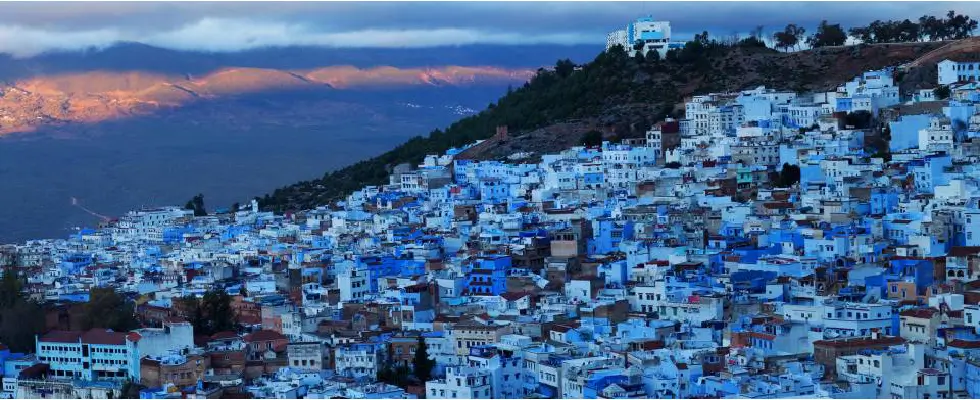
Just a short trip from Tangier, the stunning ‘Blue City’ of Chefchaouen awaits amidst the gorgeous Rif mountains, making your Tangier adventure even more memorable.
In a nutshell, Tangier is a delightful fusion of historical charm, cultural richness, and modern buzz, offering a wide range of experiences for its visitors.
Tangier Historical Background
Tangier is located where the Atlantic Ocean meets the Mediterranean Sea, making it a desirable spot for many countries including Portugal and England over the years. In 1437, during Portuguese control, a big fight broke out when Portugal tried to take over a fortress in Tangier but lost to the Marinid sultanate’s armies.
Come World War II, Tangier’s strategic spot became important again, especially for spying activities. Back then, it was an international zone, attracting spy agents and diplomats from around the world. It was a key place for the Allies, hosting a large U.S. mission.
In 1942, the U.S. mission in Tangier helped ensure the success of the Allied invasions in Morocco and Algeria, known as Operation Torch, by keeping it under wraps and tricking the Vichy regime. Tangier was a safe place for sending secret coded messages, which was vital for the U.S.’s Torch Operation. This made Tangier a major asset for the Allies during the war, especially in preparing for the invasions in North Africa.
Tangier being a center for spy activities didn’t just start in World War II; it has been a hotspot for international spies for a long time. It became known for spy activities as early as the 17th century when England took control of Tangier.
Being an international zone and its unique location made it a great place for spies and even inspired lots of spy-themed books and movies. The city saw a lot of spying activities during the 19th and 20th centuries, especially during World War II, when the USA was considering Morocco for its Torch Operation, placing Tangier at the heart of worldwide spy activities.
Conclusion
Tangier, with its rich historical legacy and cultural amalgam, is rapidly emerging as a vital economic hub in Morocco. Its strategic location at the crossroads of global trade routes, coupled with significant investments in infrastructure and development projects, augments its potential for future growth. The city’s evolution from a historical melting pot to a modern-day economic powerhouse, underscored by projects like the Tanger Med Port, reflects its escalating importance on both national and global stages. The blend of its past with contemporary economic advancements exemplifies Tangier’s dynamic potential and its growing stature on the global stage.
FAQ
How is Tangier accessible from Europe?
Tangier is easily accessible from Europe via ferry services from Tarifa and Algeciras in Spain.
Why is Tangier referred to as the “White City”?
Tangier has been nicknamed the White City due to its bright white buildings, which have stood for over 2,500 years.
Where is Tangier located?
Tangier is situated in the north of Morocco on the Strait of Gibraltar, approximately 17 miles from Spain.
What historical empires have influenced Tangier?
Tangier has been influenced by various empires including Roman, Byzantine, and Arab.
Why is Tangier known as a cultural hub?
In the mid-20th century, Tangier attracted artists, writers, and political thinkers globally. Additionally, the city reflects Berber, Arab, European, and Andalusian influences, and hosts cultural festivals like the Tangier International Film Festival and TanJAZZ.
What are some of the major attractions in Tangier?
Notable attractions include Café Hafa, Tangier’s Medina, the Caves of Hercules, and The Kasbah.
Can you tell me about Tangier’s economic significance?
Tangier stands as a crucial industrial cornerstone in Morocco, boasting sectors like automobile, textiles, chemicals, and naval industries. Major infrastructural projects such as the Tangier-Mediterranean port (Tanger-Med) have advanced the city’s economic modernization.
What’s the modern appeal of Tangier?
Modern Tangier offers a mix of historical allure and contemporary attractions, with architecture representing various cultures, a thriving art scene, and landmarks that have been featured in Hollywood movies.
What is Tangier’s historical background related to war and espionage?
During World War II, Tangier’s strategic location made it crucial for spy activities. It played a significant role during Operation Torch, assisting the Allied invasions in Morocco and Algeria. Its history as a center for international spy activities can be traced back to as early as the 17th century.
Which famous personalities were inspired by Tangier?
Renowned figures like Henri Matisse, The Beatles, and The Rolling Stones have found inspiration in Tangier.


